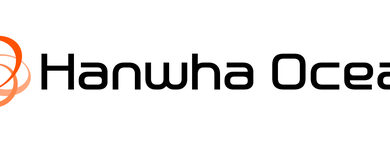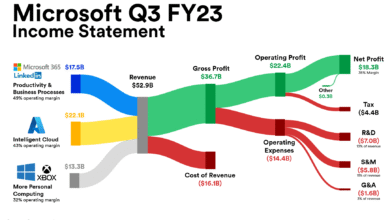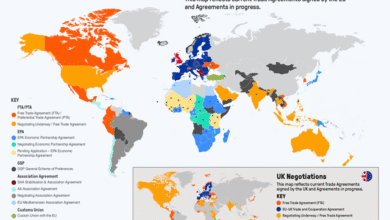Figma IPO: Company Files for Initial Public Offering

Figma IPO is making waves in the tech world as the popular design software maker has officially filed for its initial public offering with the U.S. Securities and Exchange Commission. This significant move comes over a year after Figma abandoned its planned $20 billion Adobe deal, which fell through amid regulatory scrutiny in the U.K. As the company gears up to enter the public market, its valuation stands at an impressive $12.5 billion, reaffirming its status as a leading player in collaborative design tools. The Figma initial public offering arrives at a critical moment for the tech IPO market, which has seen diminished activity since late 2021, altering the landscape for budding startups. As Figma navigates these waters, many eyes will be on how this development affects investor confidence and the overall attractiveness of tech IPOs going forward.
The impending public launch for Figma, which was once in talks for a major acquisition by Adobe, signifies a pivotal shift in the firm’s trajectory. After retracting the Adobe deal due to regulatory challenges, Figma is now poised to tap into the stock market, reflecting a broader trend among tech ventures seeking independence and growth. This transition to a publicly traded company follows a year of strategic planning and considerable valuation assessments, which highlight Figma’s robust positioning within the collaborative design software niche. As the tech industry grapples with fluctuating IPO fortunes, Figma’s upcoming SEC filing symbolizes a renewed hope for many startups aiming to follow suit. With its innovative platform and strong backing from venture capitalists, Figma’s public offering could reinvigorate interest in tech stocks while providing insight into the future of digital design solutions.
Figma’s Initial Public Offering: A New Chapter in Design Software
Figma has officially embarked on its journey toward an initial public offering (IPO) after over a year of speculation and anticipation. The company filed confidential paperwork with the U.S. Securities and Exchange Commission (SEC), making headlines in the tech industry. This significant move comes 16 months after Figma abandoned its $20 billion acquisition deal with Adobe, which was halted mainly due to regulatory challenges in the U.K. This filing indicates that Figma is seeking to capitalize on its strong market positioning amidst a year marked by market volatility and stalled IPOs.
The valuation of Figma has seen remarkable growth since its inception in 2012, with a reported worth of $12.5 billion stemming from a tender offer in 2024. This impressive valuation demonstrates the strong demand for Figma’s collaborative design tools, which have become indispensable for tech and creative professionals. As Figma conducts its IPO, its leadership expresses optimism about navigating the current landscape of the tech IPO market, all the while recalibrating after the disruption posed by the halted Adobe deal.
The Impact of the Figma-Adobe Deal on Market Dynamics
The termination of the Figma and Adobe acquisition highlights the complexities of regulatory scrutiny in the tech sector. Initially announced in 2022, the $20 billion deal fell through due to potential pushback from regulators, particularly in the U.K. This setback not only cost Adobe a $1 billion termination fee but also shifted Figma’s trajectory towards independence and public listing. Analysts suggest that this situation may pose challenges for other tech startups considering acquisitions, as regulatory bodies are increasingly vigilant about potential monopolistic practices.
The failed merger marked a crucial moment in the tech sector, as Figma’s decision to file for an IPO reveals a preference for independence among many startups. With investors such as Andreessen Horowitz and Sequoia Capital backing Figma, the decision to go public could pave the way for other companies in the industry to follow suit. Figma’s resilience through regulatory challenges serves as a case study, demonstrating that the pursuit of an independent IPO can ultimately offer substantial benefits, including control over company direction and valuation.
Understanding Figma’s Valuation and Financial Success
Figma’s valuation of $12.5 billion highlights its significant place within the design software market, characterized by growing demand for seamless collaboration tools. The firm’s innovative offerings have allowed it to capture a substantial market share, leading to approximately $600 million in annual revenue as of early 2024. Such financial stability places Figma in a strong position for its upcoming IPO, signaling to investors confidence in continued growth and expansion despite challenges faced by the broader tech sector.
Investing in Figma’s IPO presents opportunities for those looking to capitalize on the growth of digital design tools. With increasing reliance on remote collaboration and online platforms, companies like Figma are well-positioned to thrive. Furthermore, as they navigate their SEC filing and regulatory landscapes, stakeholders will be keenly observing how Figma’s market presence evolves and whether its financial projections align with its ambitious valuation in the years to come.
Navigating Regulatory Challenges in Tech IPOs
The landscape for tech IPOs has shifted significantly, particularly following Figma’s experience with the Adobe acquisition. As regulatory pressures mount, companies face increasing scrutiny when attempting significant mergers and public offerings. Figma’s decision to go public instead of pursuing further acquisitions illustrates a strategic pivot that many startups might consider in the face of similar pressures. This turning point also underscores the importance of compliance and regulatory awareness in the tech sector.
Navigating the IPO process entails thorough preparations and an understanding of the SEC’s stringent requirements. As Figma moves forward with its plans, it highlights the need for transparency and thorough documentation in any prospective public offering. This transparency is critical not only for gaining investor confidence but also for ensuring a smooth transition into the public market, even amidst regulatory complexities stemming from failed acquisition attempts.
The Future of the Tech IPO Market
The tech IPO market has been largely dormant since late 2021, and Figma’s impending IPO arrives at a critical juncture for other tech companies considering similar paths. With high-profile IPOs from fintech companies being postponed due to market turbulence, Figma’s move to go public could signal a new wave of activity in the sector. Investors are eager to see how Figma’s entry to the IPO landscape might influence market dynamics, particularly as other tech firms weigh their options.
Figma’s successful public offering could invigorate the tech IPO market, providing a roadmap for upcoming startups that share similar aspirations. As companies like Klarna and Chime reevaluate their timelines amid market changes, Figma’s resilience and proactive approach to becoming a publicly traded company might inspire renewed enthusiasm among investors. Analysts will be watching closely to assess how Figma’s IPO performance influences broader trends in tech and its potential to inspire a renaissance in IPO activity.
Investors’ Perspective on Figma’s IPO
From an investor’s standpoint, Figma now offers a compelling opportunity to gain exposure to a leading design software company before its official market debut. The company’s extensive backing from noted venture capital firms such as Andreessen Horowitz and Greylock Partners adds credibility to its financial journey. Investors are particularly interested in how Figma plans to leverage its revenue capabilities to sustain growth following its public offering, especially given its valuation and the optimistic projections of its market performance.
Potential investors will be keeping a keen eye on Figma’s financial reports and market positioning as they approach the IPO date. The tech industry’s evolving dynamics mean that investors must consider various factors, including economic climate and competitor movements, when making decisions. Figma’s current valuation and its historical performance may serve as significant indicators for potential success in the public market, assuming that the overall health of the tech IPO market remains stable.
Key Competitors and Market Positioning
Figma operates in a competitive landscape filled with various design software tools and technologies, including Adobe’s offerings and Canva. By developing unique features that emphasize collaboration, Figma has distinguished itself from traditional design platforms. As its IPO approaches, understanding these market dynamics is crucial for gauging Figma’s competitive positioning and long-term sustainability in an increasingly crowded field.
As the design software industry evolves, competitive pressures will likely influence Figma’s strategic choices post-IPO. Innovating continually and responding to customer needs will be vital factors that determine Figma’s capacity to retain its market share against established players. Observers will be closely monitoring how these dynamics affect Figma’s stock performance and operational decisions following its entrance into the public market.
Anticipating the Reaction from the Design Community
The design community is poised to react strongly to Figma’s IPO filing, given the company’s integral role in shaping collaborative design practices. Designers rely on Figma’s tools for real-time collaboration on digital projects, marking it as an essential asset in the tech stack for firms across various sectors. As the community watches this transition to public ownership, many will consider what it means for the future of design collaboration, innovation, and accessibility.
Figma’s upcoming IPO not only serves as a reflection of the company’s success but also speaks to the broader acceptance and integration of digital design tools within professional workflows. Designers and companies alike are looking to see if Figma will maintain its commitment to innovation and community engagement in the IPO era. Keeping a tight focus on user feedback and evolving design needs will be critical for preserving the loyalty of both individual users and large enterprises alike during this transition.
Challenges and Opportunities Post-IPO
Like any company entering the public market, Figma will face numerous challenges that come with being a publicly traded entity. Increased scrutiny from shareholders, market volatility, and the need for consistent financial performance are just a few of the hurdles that Figma will need to navigate. However, this transition also brings with it considerable opportunities for growth and expansion, particularly in diversifying its product offerings and exploring new markets.
Post-IPO, Figma can leverage its public status to foster greater brand recognition and attract new customers. The funding raised from the IPO may allow the company to invest heavily in research and development, thus enhancing its product capabilities. By addressing the challenges inherent in being a public company, Figma can position itself as a leader in the design software industry, potentially setting the stage for future innovations and profitability in a rapidly evolving market.
Frequently Asked Questions
What is the significance of Figma’s IPO filing?
Figma’s IPO filing is significant as it marks the company’s transition from a private startup to a publicly traded entity. This move comes after Figma abandoned its $20 billion acquisition by Adobe due to regulatory pressures, underscoring its independence and growth potential in the competitive tech landscape.
How did Figma’s valuation change leading up to its IPO?
Leading up to its IPO, Figma was valued at $12.5 billion during a tender offer in 2024. This valuation reflects strong investor confidence in Figma’s design software, especially amid a stagnant tech IPO market.
Why did Figma cancel its deal with Adobe?
Figma canceled its $20 billion acquisition deal with Adobe mainly due to regulatory challenges in the U.K. This decision allowed Figma to pursue its IPO instead, presenting itself as a standalone company in the tech industry.
What do analysts think about Figma’s potential success in the IPO market?
Analysts view Figma’s potential success in the IPO market cautiously optimistic, considering the current state of the tech IPO market which has been slow. However, Figma’s strong brand and revenue growth, estimated at $600 million annually, could position it favorably.
What are the implications of Figma’s SEC filing for future tech IPOs?
Figma’s SEC filing could pave the way for other tech companies looking to go public. As the first major mover in an inactive IPO market, Figma may inspire confidence in potential investors and encourage other firms to explore public offerings, despite recent market turbulence.
How does Figma’s software contribute to its business model ahead of the IPO?
Figma’s collaborative design software is highly valued in various industries, making it a critical component of its business model. As the demand for efficient prototyping tools increases, Figma’s IPO could attract significant investor interest.
What challenges might Figma face after going public?
After going public, Figma may face challenges such as maintaining growth in a competitive landscape, navigating regulatory scrutiny, and meeting shareholder expectations, particularly due to the caution surrounding the overall tech IPO market.
What investors are backing Figma ahead of its IPO?
Figma is backed by prominent investors including Andreessen Horowitz, Durable Capital, Greylock Partners, Index Ventures, Kleiner Perkins, and Sequoia Capital. Their support has helped establish Figma’s credibility and fuel its growth leading up to the IPO.
How does Figma’s approach differ from traditional tech company IPO strategies?
Figma’s approach differs from traditional tech company IPO strategies as it has opted for a confidential filing with the SEC, a strategy that allows companies to gauge investor interest and market conditions before publicly disclosing details.
What does Figma’s IPO mean for the future of design software markets?
Figma’s IPO could signify a turning point for design software markets. If successful, it may encourage investment and innovation within the field as more companies recognize the commercial viability of collaborative design tools.
| Key Points |
|---|
| Figma files for IPO confidentially with the SEC, marking an important step for the company after previous acquisition attempts. |
| The IPO filing follows the abandonment of a $20 billion acquisition deal with Adobe. |
| Figma was valued at $12.5 billion during a 2024 tender offer and has significant backing from major investors. |
| The tech IPO market remains volatile, with multiple companies postponing their IPOs due to market instability. |
| Dylan Field, CEO of Figma, emphasized that startups typically either go public or are acquired. |
| Figma generates approximately $600 million in annual revenue and ranks among top disruptors in the tech industry. |
Summary
The Figma IPO marks a pivotal moment in the tech landscape as the design software company moves forward with its plans to go public after previously abandoning a major acquisition deal with Adobe. With an impressive valuation and substantial backing from notable investors, Figma demonstrates its potential for growth despite the current challenges facing the tech IPO market. As the company aims to tap into new opportunities, the upcoming Figma IPO could redefine its trajectory in the competitive software development space.




